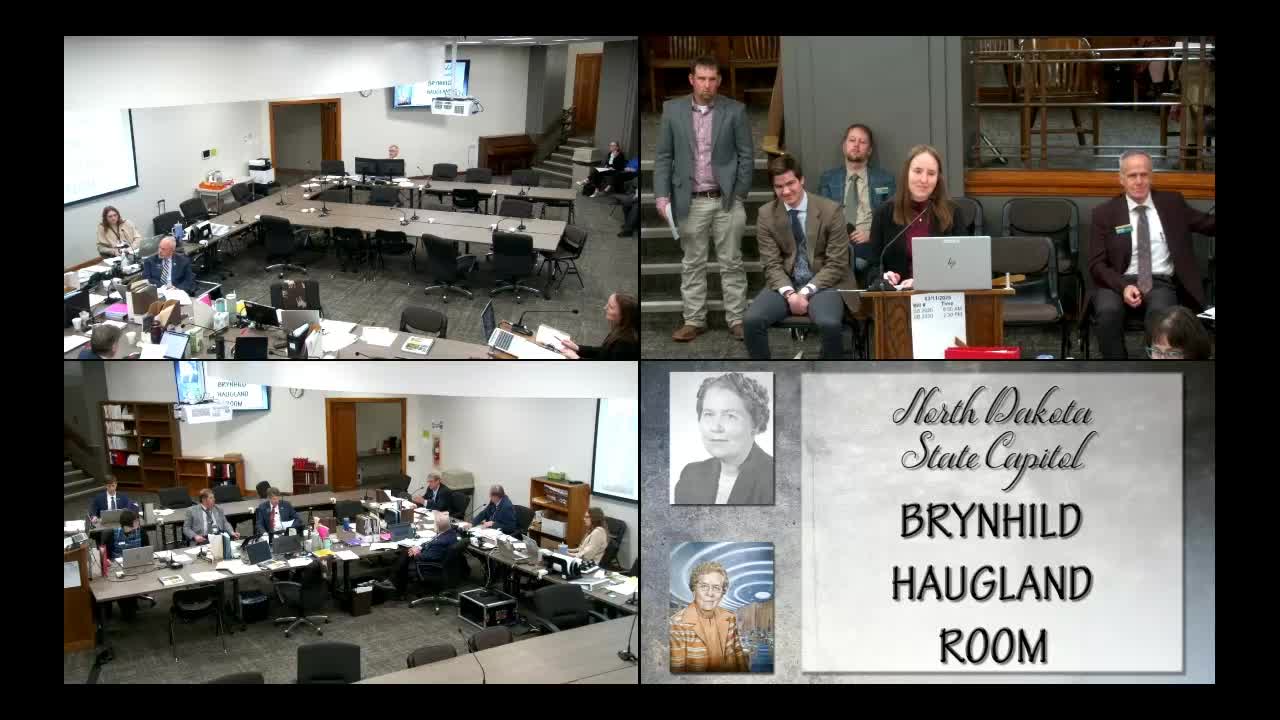Farmers advocate for increased funding at Carrington Research Extension Center hearing
March 11, 2025 | Appropriations - Government Operations Division, House of Representatives, Legislative, North Dakota
This article was created by AI summarizing key points discussed. AI makes mistakes, so for full details and context, please refer to the video of the full meeting. Please report any errors so we can fix them. Report an error »

In a recent meeting of the North Dakota House Appropriations - Government Operations Division, key discussions centered around the importance of agricultural research and education, particularly through the Carrington Research Extension Center (CREC) and other agricultural research facilities in the state. The meeting highlighted the critical role these centers play in supporting farmers and ranchers amid rising operational costs and the need for sustainable agricultural practices.
Justin Topp, a fourth-generation farmer and rancher, emphasized the significant increase in the cost of planting crops, noting that the average cost of planting corn has risen nearly 30% over the past decade. He argued that the CREC serves as an essential resource for unbiased research and development, providing farmers with vital information on crop production, including trials on fertilizers, chemical use, and crop rotations. Topp pointed out that the research conducted at CREC not only enhances productivity but also contributes to increased revenue for farmers, which in turn benefits local communities through higher tax contributions.
The meeting also featured testimony from Thomas Wheeler, a farmer from Ray, North Dakota, who discussed the need for improved facilities at the Lisonbee Research Extension Center. He highlighted the potential for irrigation development in the region, which could significantly expand agricultural output. Wheeler noted the challenges posed by rising costs associated with the Bakken oil boom, which complicate the financial landscape for agricultural research and development.
Both speakers underscored the necessity of continued and increased funding for agricultural research centers to ensure that farmers can adapt to changing conditions and maintain productivity. The discussions reflected a broader concern about the sustainability of agriculture in North Dakota, as farmers face pressures to produce more with fewer resources.
As the committee considers budget allocations, the testimonies from Topp and Wheeler serve as a reminder of the vital link between agricultural research, economic stability, and community well-being in North Dakota. The outcomes of these discussions will likely influence future funding decisions, impacting the agricultural sector's ability to thrive in an increasingly challenging environment.
Justin Topp, a fourth-generation farmer and rancher, emphasized the significant increase in the cost of planting crops, noting that the average cost of planting corn has risen nearly 30% over the past decade. He argued that the CREC serves as an essential resource for unbiased research and development, providing farmers with vital information on crop production, including trials on fertilizers, chemical use, and crop rotations. Topp pointed out that the research conducted at CREC not only enhances productivity but also contributes to increased revenue for farmers, which in turn benefits local communities through higher tax contributions.
The meeting also featured testimony from Thomas Wheeler, a farmer from Ray, North Dakota, who discussed the need for improved facilities at the Lisonbee Research Extension Center. He highlighted the potential for irrigation development in the region, which could significantly expand agricultural output. Wheeler noted the challenges posed by rising costs associated with the Bakken oil boom, which complicate the financial landscape for agricultural research and development.
Both speakers underscored the necessity of continued and increased funding for agricultural research centers to ensure that farmers can adapt to changing conditions and maintain productivity. The discussions reflected a broader concern about the sustainability of agriculture in North Dakota, as farmers face pressures to produce more with fewer resources.
As the committee considers budget allocations, the testimonies from Topp and Wheeler serve as a reminder of the vital link between agricultural research, economic stability, and community well-being in North Dakota. The outcomes of these discussions will likely influence future funding decisions, impacting the agricultural sector's ability to thrive in an increasingly challenging environment.
View full meeting
This article is based on a recent meeting—watch the full video and explore the complete transcript for deeper insights into the discussion.
View full meeting
